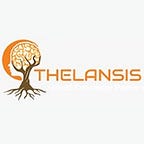Hyperphosphatemia — Market Outlook, Epidemiology, Competitive Landscape, and Market Forecast Report — 2023 To 2033
Elevated serum phosphorus levels of hyperphosphatemia are defined as surpassing 4.5 mg/dL, with severe cases categorized by levels exceeding 14 mg/dL. Renal failure is the predominant cause, primarily attributed to a glomerular filtration rate below 30 mL/min, which diminishes inorganic phosphate filtration, elevating serum levels. Additional less frequent contributors encompass heightened phosphorus intake and increased renal reabsorption. Excessive phosphate ingestion may result from the overuse of phosphate-containing laxatives or enemas, coupled with vitamin D intoxication, which enhances intestinal phosphate absorption. Conditions such as hypoparathyroidism, acromegaly, and thyrotoxicosis intensify renal phosphate reabsorption, contributing to hyperphosphatemia. Genetic factors also play a role, with deficiencies leading to hypoparathyroidism, pseudohypoparathyroidism, and decreased FGF-23 activity. The guidelines for Kidney Disease: Improving Global Outcomes (KDIGO) recommend reducing phosphate levels in dialysis patients toward the normal range without specifying a target level. Maintaining serum phosphate levels within the normal range (below 4.5 mg/dL [1.45 mmol/L]) is advised for non-dialysis chronic kidney disease patients. Effective control involves managing secondary hyperparathyroidism with vitamin D metabolites and calcium-sensing receptor agonists. Xphozah, FDA-approved for adults with chronic kidney disease on dialysis, serves as an adjunct therapy for those with an insufficient response to phosphate binders. Typically asymptomatic, hyperphosphatemia’s mortality stems from underlying conditions. Short-term complications encompass tetany due to hypocalcemia and the deposition of calcium/phosphate in soft tissues, subcutaneous tissues, and joints.
- Conversely, hypophosphatemia is prevalent in up to 34% of patients post-elective cardiac surgery, with a notably high incidence after major hepatic surgery, where nearly all patients experience hypophosphatemia within the initial postoperative week.
Thelansis’s “Hyperphosphatemia Market Outlook, Epidemiology, Competitive Landscape, and Market Forecast Report — 2023 To 2033” covers disease overview, epidemiology, drug utilization, prescription share analysis, competitive landscape, clinical practice, regulatory landscape, patient share, market uptake, market forecast, and key market insights under the potential Hyperphosphatemia treatment modalities options for eight major markets (USA, Germany, France, Italy, Spain, UK, Japan, and China).
KOLs insights of Hyperphosphatemia across 8 MM market from the centre of Excellence/ Public/ Private hospitals participated in the study. Insights around current treatment landscape, epidemiology, clinical characteristics, future treatment paradigm, and Unmet needs.
Hyperphosphatemia Market Forecast Patient Based Forecast Model (MS. Excel Based Automated Dashboard), which Data Inputs with sourcing, Market Event, and Product Event, Country specific Forecast Model, Market uptake and patient share uptake, Attribute Analysis, Analog Analysis, Disease burden, and pricing scenario, Summary, and Insights.
Thelansis Competitive Intelligence (CI) practice has been established based on a deep understanding of the pharma/biotech business environment to provide an optimized support system to all levels of the decision-making process. It enables business leaders in forward-thinking and proactive decision-making. Thelansis supports scientific and commercial teams in seamless CI support by creating an AI/ ML-based technology-driven platform that manages the data flow from primary and secondary sources.
